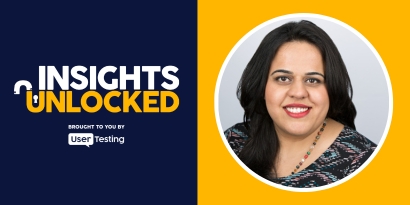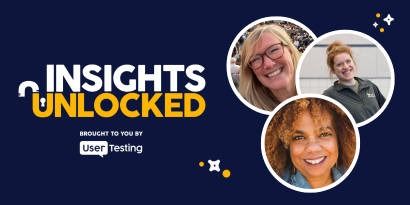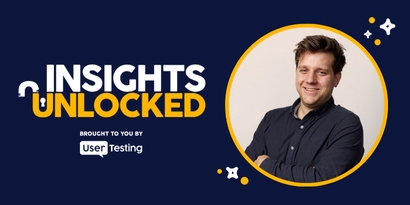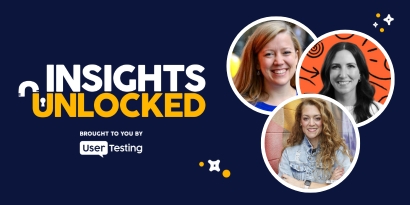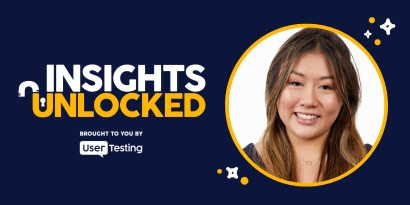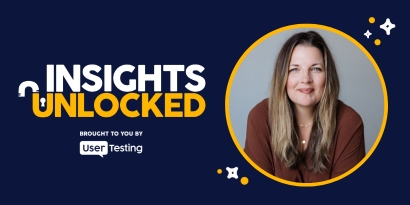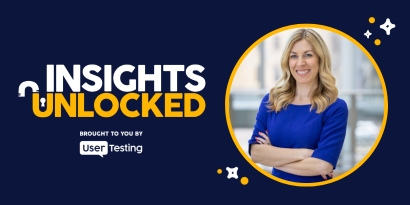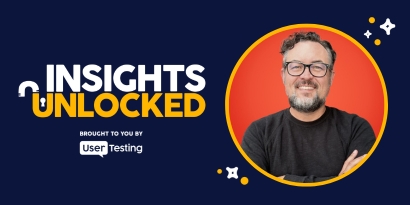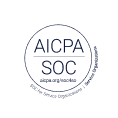
Episode 9 | November 30, 2020
How UX is transforming government services
Discover how UX is transforming government services! Learn about public sector innovation, accessibility, and digital transformation in this insightful episode.
How UX is transforming the public sector: innovation in government services
What if renewing your driver's license or applying for government benefits was as seamless as ordering a product online? Imagine a world where public sector services were as intuitive as your favorite app. That future isn’t just possible—it’s already happening. Government agencies are beginning to embrace public sector UX, transforming how they engage with citizens through digital innovation and human-centered design.
In a recent episode of the Human Insight Podcast, hosts Janelle Estes and Andy MacMillan spoke with Stephanie Nguyen, a researcher specializing in data privacy and UX, and Nick Sinai, a senior fellow at Harvard and former US Deputy Chief Technology Officer. They discussed how government agencies are rethinking service design, improving accessibility, and embracing government digital innovation to meet the needs of diverse communities.
"Customer experience is becoming a priority in government. That’s a game-changer." – Nick Sinai
Bridging the UX gap in government
For years, UX design has been synonymous with tech startups and consumer brands. But in government, the experience of citizens—often called the "constituent experience"—has traditionally been an afterthought. That’s changing, thanks to growing efforts to put user experience (UX) at the center of public services.
Nick Sinai explains:
"Customer experience and user experience is a growing thing in government. We now see federal agencies with Chief Customer Experience Officers, like the VA’s Veterans Experience Officer, and we’re seeing a real push to improve government services."

These efforts aren't just about convenience; they ensure equitable access. Whether it's veterans applying for benefits, seniors navigating Social Security, or immigrants interacting with the State Department, every user should have a seamless and dignified experience.
Government UX vs. private sector UX: what’s the difference?
While the core principles of UX—usability, accessibility, and human-centered design—remain the same, the public sector UX presents unique challenges:
- Serving everyone, not just the most profitable customers: Unlike private companies, which tailor experiences to their target audience, government agencies must design for broad and diverse populations. The U.S. Census Bureau, for example, serves every resident, requiring multilingual support and accessibility for all communities.
- Compliance as a baseline, not the goal: Many government services must meet strict accessibility and legal requirements. But as Andy MacMillan notes, compliance should be seen as a starting point rather than a hurdle:
"I like the idea of thinking about compliance not as a bar to meet but a floor to be above. How do we ensure we’re truly making these experiences accessible rather than just checking a box?" - Designing for high-stakes situations: Whether it's healthcare, unemployment benefits, or public safety, government interactions often come at moments of stress. The challenge isn't just creating a smooth user journey—it’s designing experiences that are clear, reassuring, and easy to navigate during life-altering events.
Success stories in government digital innovation
Despite these challenges, some government agencies are leading the way in public sector UX transformation. Here are a few standout examples:
1. The DMV’s digital transformation
DMVs have long been infamous for long wait times and bureaucratic frustration. But recent digital innovations have reshaped the experience.
Andy MacMillan shared a surprising personal experience:
"I had to renew my license at the California DMV, and I expected the worst. But when I got there, they had rethought the entire experience—digital check-ins, better queue management, and online pre-processing. I was in and out in 40 minutes. That’s the power of UX in government!"
2. The VA’s overhaul of veteran services
The Veterans Administration (VA) went from having over 1,000 disjointed websites to one unified digital platform. They also consolidated thousands of 1-800 numbers, making it easier for veterans to find the services they need.
Nick Sinai highlights this shift:
"Instead of being a VA-centric organization, they’re moving to be a veteran-centric organization. That shift—focusing on user needs first—has been game-changing."
3. New Jersey’s rapid COVID-19 response
When the pandemic hit, the New Jersey Office of Innovation quickly launched an online hub for COVID-19 updates, job resources, and testing information. Within days, one-fifth of the state’s population had accessed the site.
"The ability to adapt, provide real-time updates, and meet people where they are—that’s what public sector UX should be about," says Sinai.
Designing for accessibility and inclusion
One of the biggest UX challenges in the public sector is ensuring accessibility for all users, including people with disabilities, non-English speakers, and those with limited digital literacy.
Stephanie Nguyen emphasizes the importance of inclusive design:
"We need to stop thinking about accessibility as a nuisance. Making a service more accessible makes it better for everyone."
This means:
✅ Writing content at an 8th-grade reading level for clarity
✅ Providing multilingual support for non-English speakers
✅ Designing with assistive technology users in mind
"Compliance is just the floor. UX should be about exceeding accessibility, not just meeting it." – Andy MacMillan
Boston, for example, redesigned its public service notices, changing confusing legal jargon into plain language so residents could understand tickets and fines at a glance.
Bringing user research to government
A major shift in public sector UX has been the introduction of user research in government. Agencies are now conducting usability tests, gathering citizen feedback, and even employing user researchers on project teams.
However, persuading leadership to embrace UX isn’t always easy.
Nick Sinai advises UX advocates in government to "show, don’t tell":
"Instead of talking about UX theory, bring leadership real user stories, real data, real voices. Show them how people actually interact with these services, and you’ll make a much bigger impact."
This approach—combining quantitative data with real-world stories—helps decision-makers connect emotionally with the people they serve.
"Making services accessible makes them better for everyone." – Stephanie Nguyen
The future of UX in government
As government agencies continue their digital transformation, UX professionals have an incredible opportunity to drive change. Whether through improving healthcare websites, streamlining benefits applications, or enhancing cybersecurity measures, public sector UX is at the forefront of innovation.
Nick Sinai sees the next generation as the key to progress:
"We’re seeing young technologists, designers, and data scientists choosing government service over big tech. They want to make an impact. And if we create opportunities for them to serve, the future of government UX is incredibly bright."
Why UX professionals should care
If you’re a designer, researcher, or product leader, government work might not be the first thing on your radar. But public sector UX offers some of the most meaningful design challenges out there.
Whether you work directly in government or contribute through civic tech initiatives, your skills can make a tangible difference in people’s lives. As Stephanie Nguyen puts it:
"Now is the time to think about how you can use your skills to help build a better, more accessible society. The need has never been greater."
Episode links:
- Designing UX for nonprofits: what do the experts say?: This article explores how good UX practices can benefit nonprofit organizations, which often face challenges similar to public sector entities, such as limited resources and diverse user bases.
- How to get stakeholder buy-in for user research: expert tips: This piece offers strategies for communicating the value of user research to stakeholders—a crucial step in implementing UX improvements within government agencies.
- Democratizing UX throughout your organization: This article discusses methods to spread UX insights across an organization, a practice that can be beneficial for government agencies aiming to integrate user-centered design into their processes.
- UX strategy: the foundation of a successful product: This resource delves into creating a UX strategy that aligns with organizational goals, which is pertinent for public sector entities looking to enhance their digital services.
